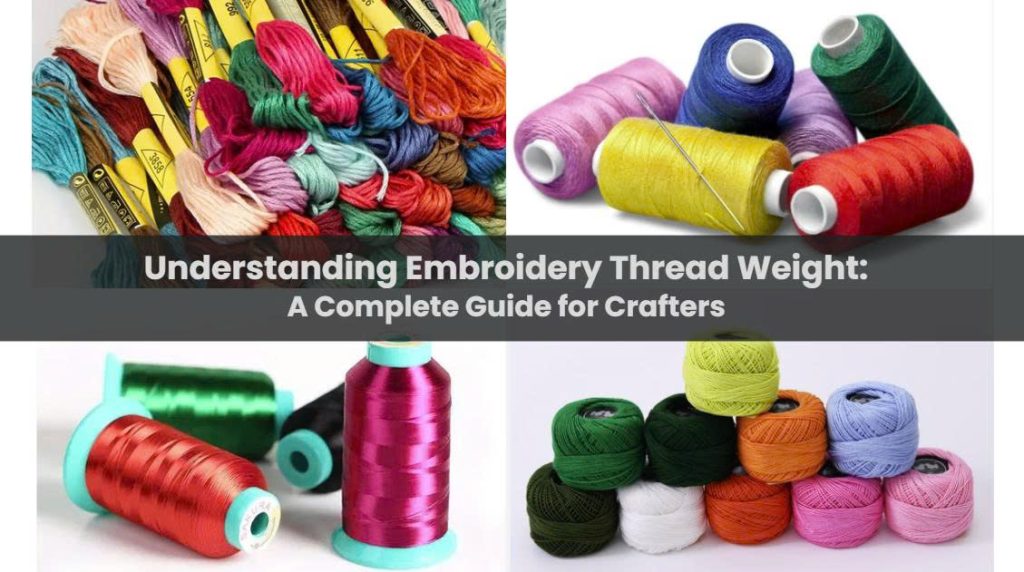Selecting the right embroidery thread weight can make or break a project. Whether you are an experienced embroiderer or just starting out, knowing how thread weight works will help you achieve the finish, texture, and durability you want. This guide explains thread weight, its role in stitching, and how to select the right option for your fabric and design.
As an industry insider, MH will walk you through the essentials of thread weight, conversions, and tips for choosing the most suitable thread for your craft.
What Does Thread Weight Mean?
Thread weight indicates how thick or fine a thread is. The measurement is expressed in numbers: the lower the number, the thicker the thread; the higher the number, the finer it is.
- Example: A 30-weight thread is heavier and thicker than a 50-weight thread.
This measurement is important because it directly affects the look of your stitches, the overall feel of your project, and the durability of the finished piece. Choosing the correct thread weight reduces issues like breakage or tension problems, giving your work a clean and professional outcome.
Common Types of Embroidery Thread
Embroidery threads come in various materials, each suited to different purposes. They are available in both solid shades and variegated colors to expand creative possibilities.
1. Polyester
- Strong, colorfast, and resistant to fading.
- Ideal for high-speed machine embroidery.
- Popular for designs that require vibrant colors and a shiny finish.
2. Rayon
- Known for its silky texture and high sheen.
- Excellent for decorative work.
- Less durable than polyester and not the best choice for items that need frequent washing.
3. Cotton
- Offers a soft, matte finish.
- Versatile for both machine and hand embroidery.
- Favored for traditional, heirloom, or classic embroidery projects.
4. Perle Cotton
- Thick, non-divisible threads with a bold, textured look.
- Often used in hand embroidery or for decorative stitches.
- Available in multiple weights, where smaller numbers equal thicker threads.
Comparing Thread Weights
Thread weight reflects length in relation to weight. Here are the general categories:
- Medium Weight (40–50wt): Great for everyday machine embroidery, quilting, and general sewing.
- Fine Weight (60–100wt): Perfect for detailed embroidery, appliqué, and delicate stitch work. Works well on lightweight fabrics.
- Heavy Weight (12–30wt): Best for bold quilting, textured embroidery, or decorative stitching where threads need to stand out.
Conversion Basics
- Weight → Denier: 9000 ÷ weight
- Weight → Tex: 1000 ÷ weight
Example: A 40wt thread = 225 denier or Tex 25.
How to Choose the Right Thread Weight
When deciding on a thread, consider these factors:
- Machine embroidery: Use 40–50wt for most designs; 60wt+ for fine details.
- Hand embroidery: Thicker threads (12–30wt) create bold effects; finer threads add precision.
- Heavy fabrics benefit from stronger, thicker threads.
- Delicate fabrics pair better with finer threads to avoid puckering or damage.
- Dense designs require finer threads to avoid overcrowding.
- Open, light designs look more dynamic with thicker threads.
- Heavier threads need larger needles.
- Finer threads pair with smaller needles for accuracy.
- Thick threads may require higher tension.
- Thin threads usually work with lighter tension for smooth stitching.
Thread Weight for Different Applications
- Machine Embroidery: 40–50wt as the standard; 60wt for tiny lettering or intricate patterns.
- Hand Embroidery: 30wt+ for bold textures; 60wt or finer for detailed work.
- Quilting: 40–50wt for piecing and general quilting; 12–30wt for decorative quilting with visible stitches.
Why Thread Weight Matters
Using the right thread weight enhances:
- Durability: Heavier threads add strength to items that need frequent use.
- Stitch Definition: Fine threads create crisp, subtle details, while thicker threads produce dramatic, textured designs.
- Professional Finish: Proper thread weight ensures smooth stitching with fewer breaks and balanced tension.
Remember to adjust stitch length when using thicker threads to avoid clumping or uneven coverage.
Tips for Achieving Professional Results
- Always test different thread weights on scrap fabric first.
- Match bobbin thread to your chosen top thread weight for balance.
- Experiment with different thread types to find what suits your style best.
By mastering thread weight, you can elevate your embroidery projects—turning ordinary stitches into polished, professional-quality designs.

